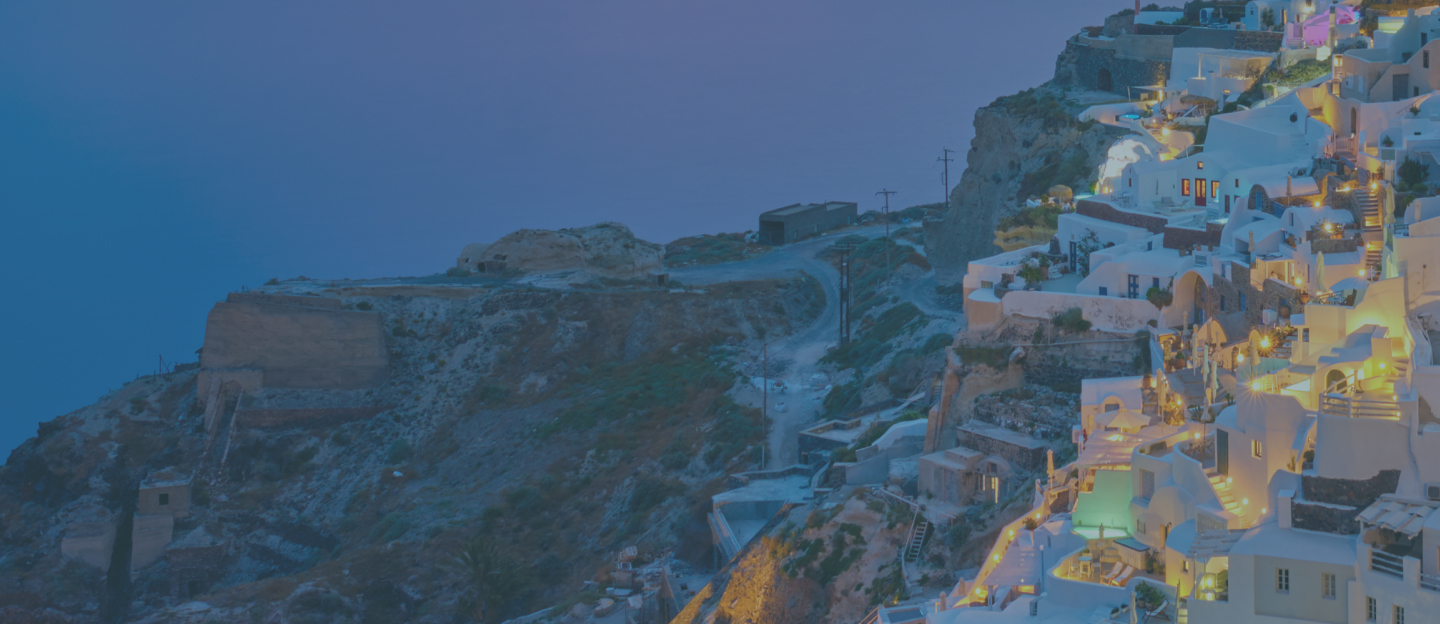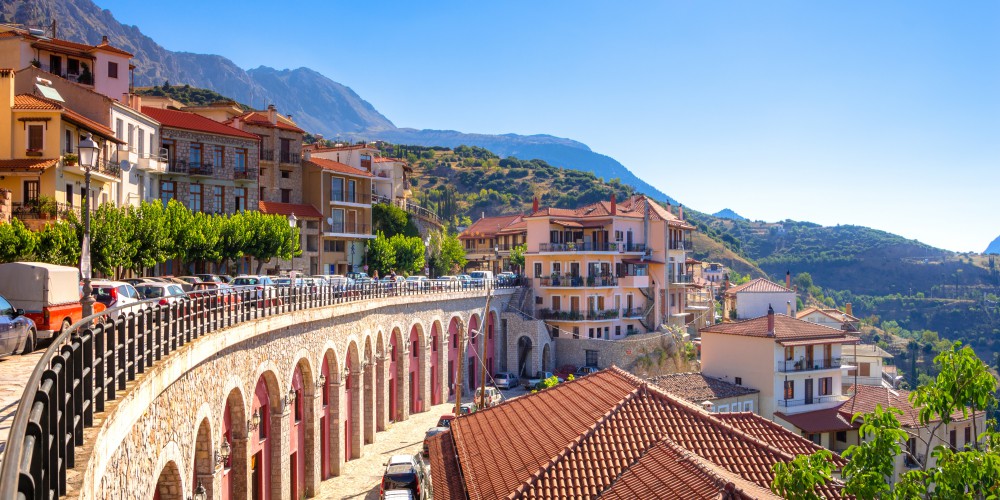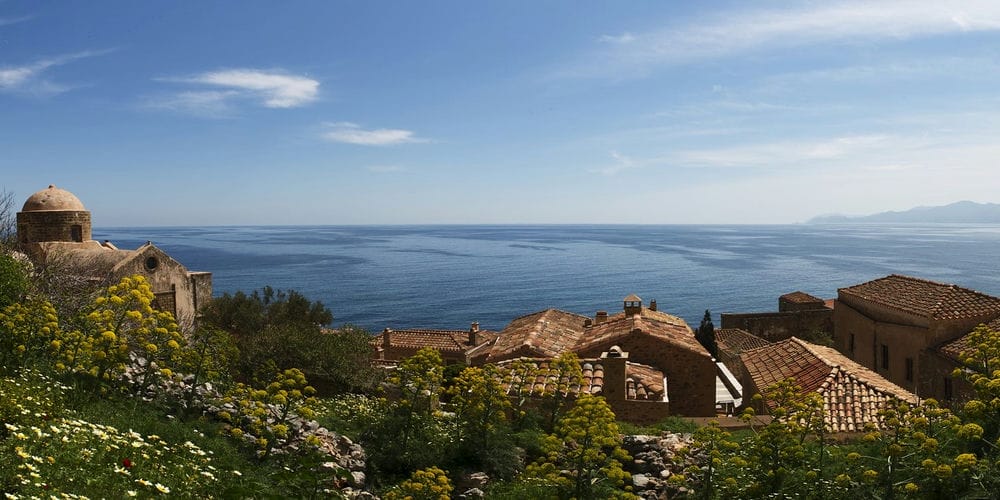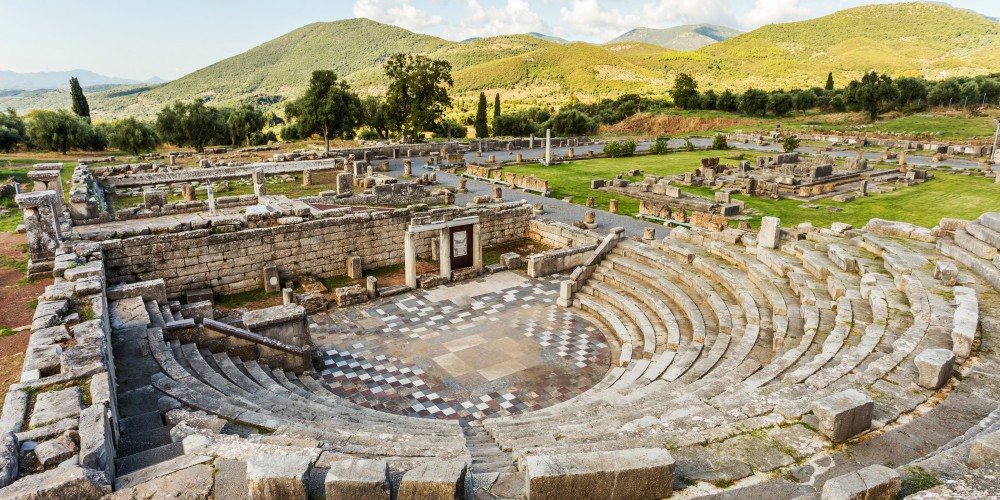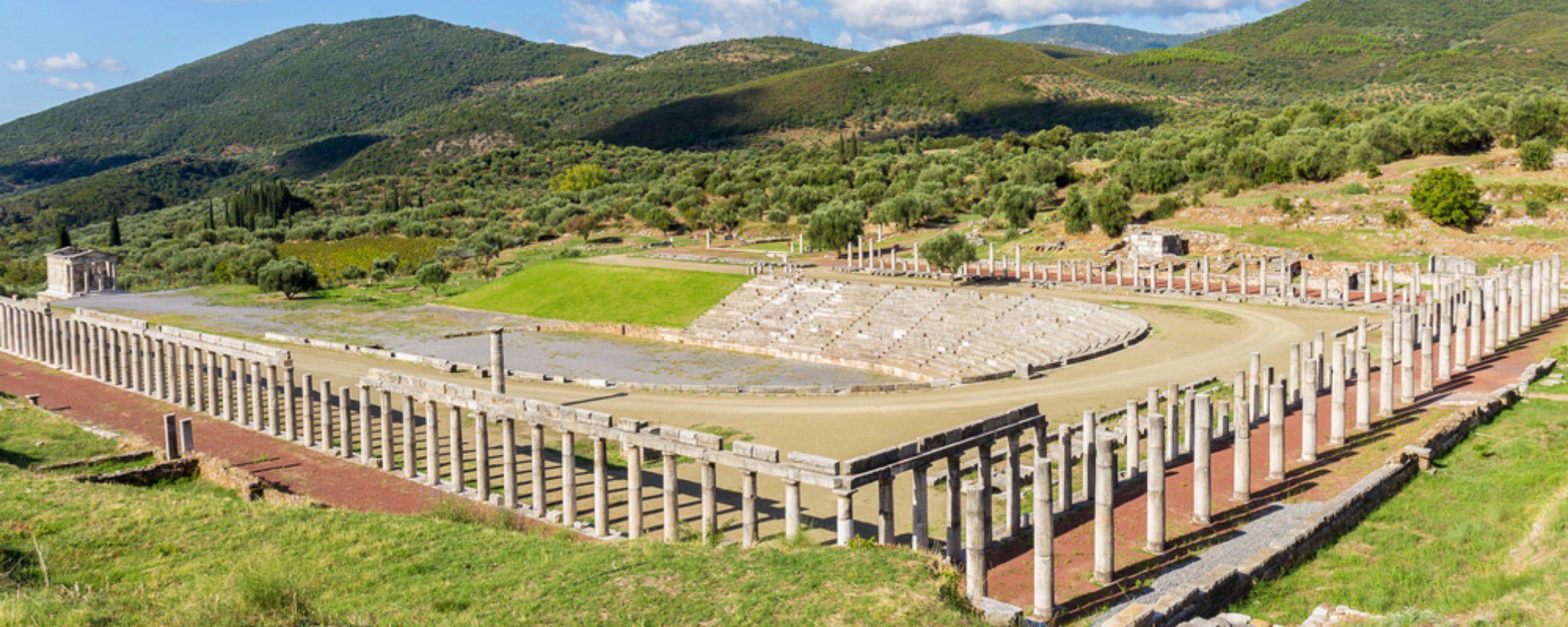
The Impressive Archaeological Site of Ancient Messene
Key Takeaways
- Ancient Messene is known for its remarkably well-preserved ruins. The site includes a well-preserved stadium, theater, agora (marketplace), temples, and fortifications.
- The city follows a grid plan layout, which was characteristic of ancient Greek cities.
- The well-preserved stadium of Ancient Messene was used for various sporting events, including running races, highlighting the importance of physical exercise and education in ancient Greek society.
- The on-site Archaeological Museum provides additional context and showcases items related to daily life, art, and religious practices in Ancient Messene.
Located on the giant peninsula of the Peloponnese, Messene (or Ancient Messini) is possibly the most underrated archeological site in the whole of Greece, and it's time to explore it!
This ancient city was, unlike most others, untouched by the later settlements and has thus been preserved outstandingly.
The excavation of this archaeological site took place recently compared to the archaeological site of Epidaurus or Delphi, which explains why it's still an off-the-radar destination.
That being said, the archeological site of Ancient Messene is arguably one of the most impressive ones, given its sheer size. The site has been steadily in the process of being excavated for the last 100 years, but only a third of its total size has been completed so far!
The Archaeological site of Ancient Messene and the Archaeological Museum
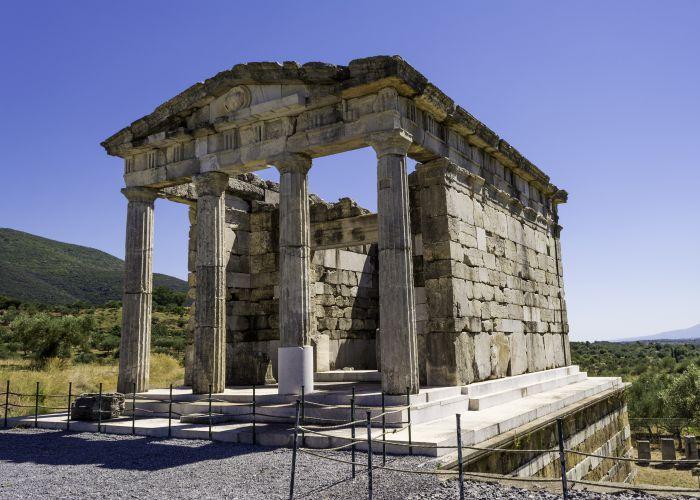
The remains of this tremendous ancient city are complete with a grand ancient stadium, an Ancient Agora, an ancient theatre with a capacity of up to ten thousand spectators, and a fountain house. It is so well-maintained that you can easily envision the city in all of its glory.
There is also a museum located directly next to the archeological site, which is home to the thousands of findings uncovered by archaeologists. The Ancient Museum of Messene is fascinating to visit after exploring the archaeological site.
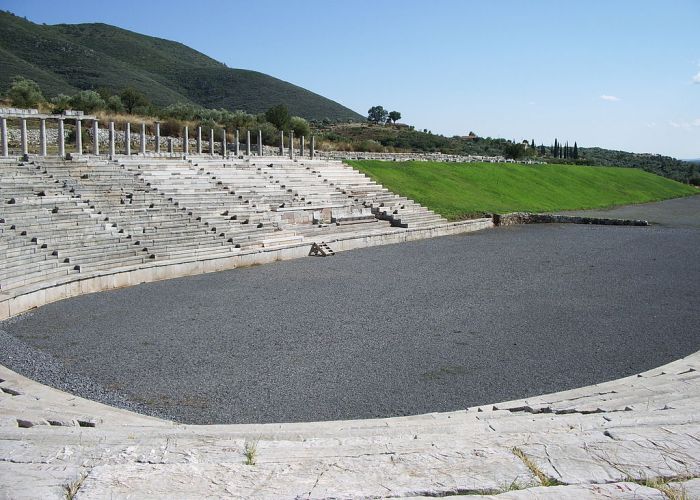
With an extensive catalog of artifacts, you will be able to color in the image of the city you have created in your mind’s eye with artwork and sculptures.
The archaeological site of Messene is open from 08:00 to 20:00 in the summer months, and adult tickets cost a mere EUR 12.
You would need at least 2 hours to tour this ancient site, but one could easily stay there and explore for hours on end.
You can find more details about opening hours and varying ticket prices here. As it is just a 3-hour drive from Athens, one could make it a day trip, stopping at the exquisite Italianate town of Nafplion for a walking tour or the city of Nemea, famous for its wine production, on the way!
A bit about the history of the ancient city

What's unusual is none of Messene's visible remains date back further than the classical period and the 4th century BC, which is interesting because the city of Messene developed later than others like ancient sites Athens and Corinth, despite it being located in one of the most fertile areas of the country.
This can be explained by the fact that Messene was built in 369 BC by the great Theban army general Epaminondas, who defeated the Spartan military power and liberated the Messenia region. Before that, Messene was controlled by Sparta for hundreds of years.
Historians and archaeologists have little information about the time that Messene was under Spartan rule, but they do know that it was a time when the Messenians were unable to express political opinions or have any cultural freedoms.
Epaminondas freed the Messenians and designed a city that would be strong enough to defend itself against another potential Spartan attack.
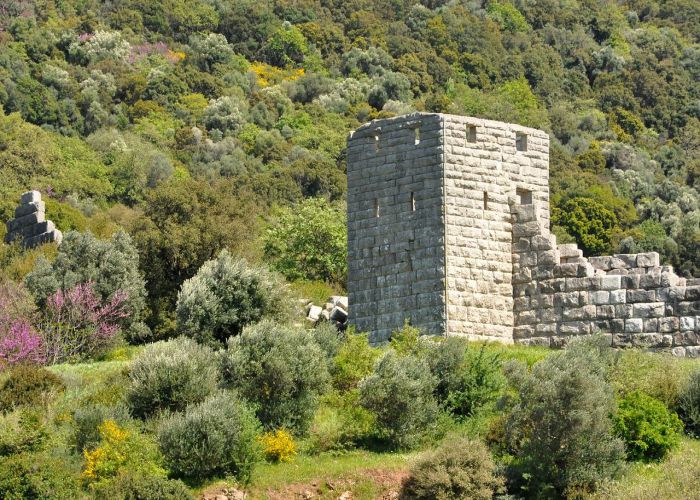
Greece, Ancient Messene - credits: en.wikipedia.org
This stunning site lies in a serene valley, surrounded by the Arcadian Mountains on one side and the Mediterranean Sea on the other, a truly spectacular setting.
Ancient Greek traveler and geographer Pausanias describes the city in great detail in his ancient writings, where it becomes apparent that he was fond of Messene.
He describes public buildings such as theaters, sanctuaries, temples, statues, a gymnasium, springs, and an agora that hosted political gatherings and other events of everyday life.
He also mentions how strong the surrounding walls were in ancient times. Indeed, the remains of the Arcadian Gate demonstrate how strongly fortified the city was in addition to being technologically advanced.
The city walls stretch for 9 km and are flagged with towers and battlements still visible today on the archaeological site of Ancient Messene.
Messene’s Architecture
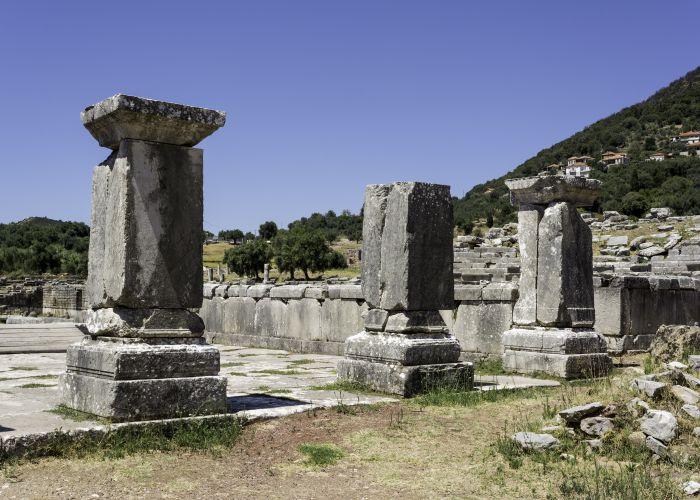
Messene was designed and built in line with the Hippodamian style. Hippodamus was an ancient Greek architect and urban planner and has been acknowledged as the inventor of formal city planning.
He fathered the concept of shaping a city in symmetrical rectangular grids. At the time, this was a pioneering idea, as cities typically looked more like labyrinths to make it harder for foreign invaders to navigate.
Hippodamus would designate areas in the center of the city to serve as sacred public spaces and then build around them, in a systematic and organized way, instead of choosing these areas at random.

Basically, Hippodamus would place all public life first: government buildings, agoras, theaters, and shrines in the center of the city and then surround it with a grid of streets that were private.
This is the earliest form of the practice we know today as 'zoning'. As soon as you step foot in the city through the Archadian Gate, you will notice the Hippodamus-style symmetry, which certainly adds to the city’s grandeur.
Ηow to explore Messinia outside its famous archaeological site
Messinia, with its medieval castles and vast history, is one of the most beautiful destinations in the Peloponnese! Dive into the Messinian crystal waters and pristine waterfalls or explore its full-of-monuments countryside.
The county of Messinia is located in the southwestern part of the Peloponnese. With countless mesmerizing beaches and historical landmarks, it is ideal not only for those interested in archaeological sites but also for nature lovers. Here are the spots we think you shouldn't miss on your journey to Messinia!
Explore Pylos and its castles
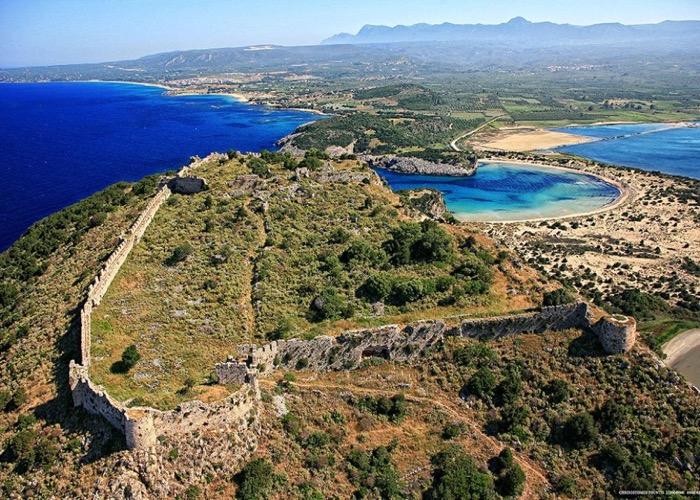
The region of Pylos -also known as Navarino- is an area of high natural and archaeological significance. Ancient Pylos was the homeland of the mythical king Nestor.
He was one of the legendary Argonauts, and he accomplished seizing power from king Neleus with the help of the demi-god Hercules.
Nestor appears in a range of ancient Greek myths, such as the one of Centauromachy or the hunt of the Calydonian Boar.
Do not miss the chance to visit the Mycenaean palace of Nestor, mentioned in Homer's Odyssey, located about 9km away from the modern town of Pylos.
Due to its strategic location, Pylos was always a place of continuous conflict. It was a site of utmost importance for the Byzantines, the Venetians, the Genoans, and the Ottomans, a fact that justifies the existence of numerous castles in the area.
Do not miss visiting Palaiokastro, built in the 13th century by Crusaders, or Niokastro, one of the most impressive and well-preserved castles in Greece. Situated on top of the hill of modern-day Pylos, it was built by the Ottomans during the 16th century to protect the south entrance of Navarino Bay.
Additionally, grab the opportunity to visit the small, gothic church found inside the castle!
Discover Voidokoilia beach
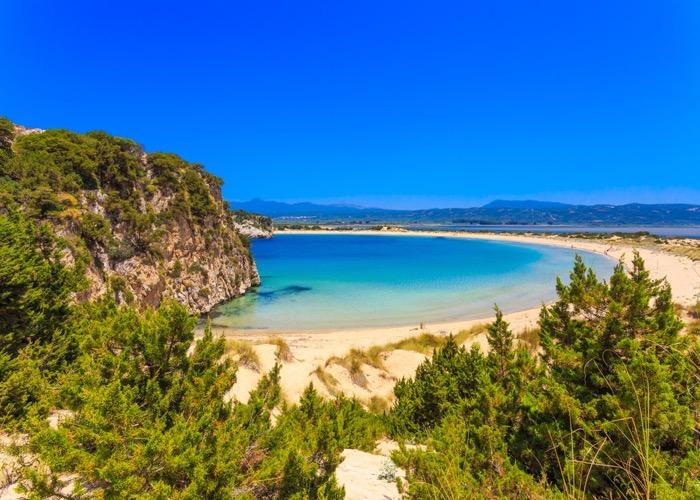
A mesmerizing natural landmark and a Natura 2000 protected natural park, the beach of Voidokoilia -literally translating to 'the belly of the ox'- is a sight not to be missed!
It is believed to be the place where according to Homer, Telemachus, the son of Odysseus, sailed to meet Nestor and Menelaus. Dip into the crystal waters of the Ionian Sea and relax on the white sandy beach!
In case you are feeling adventurous enough, hike to the Cave of Nestor, located at the foot of Palaiokastro, or to the Mycenaean tomb of Thrasymedes, son of Nestor, found on the northern hill of Voidokoilia beach. Do not forget to check out the tiny, beautifully secluded beach of Glossa, a favorite spot for nudists.
Visit the magnificent temple of Apollo Epikourios
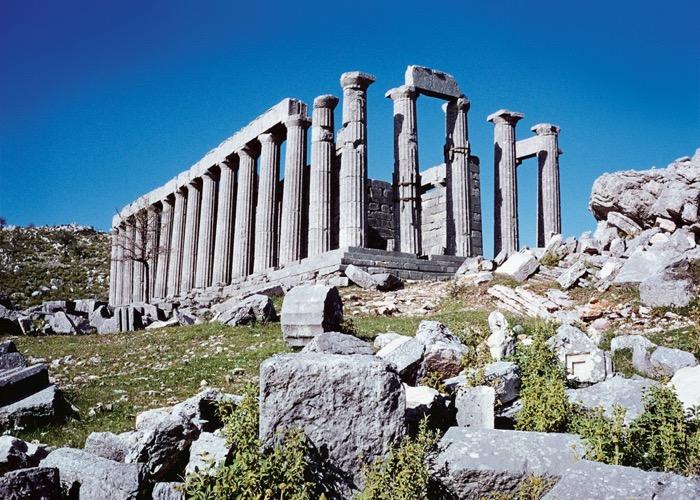
This Doric temple is located at the western point of Peloponnese, approximately a 1 ½ hr away car ride from the city of Kalamata.
Built in the middle of the 5th century BC by the great architect Ictinos (one of the Parthenon architects), it was dedicated to Apollo Epikourios (meaning Apollo, the Helper). Famous for its beauty even in antiquity, Pausanias witnessed the temple and dared to compare it only to the one of Athena Alea in Tegea.
Due to its remoteness, the temple of Apollo Epikourios survived through pillaging and destruction over the centuries, to be rediscovered by European travelers only in the 18th century.
In 1812, two archaeologists, Charles R. Cockerell, and Carl H. von Hallerstein, visited the temple, dispatching most of its sculptures and important architectural parts.
The majority is currently exhibited at the British Museum in London.
Find Neda waterfalls
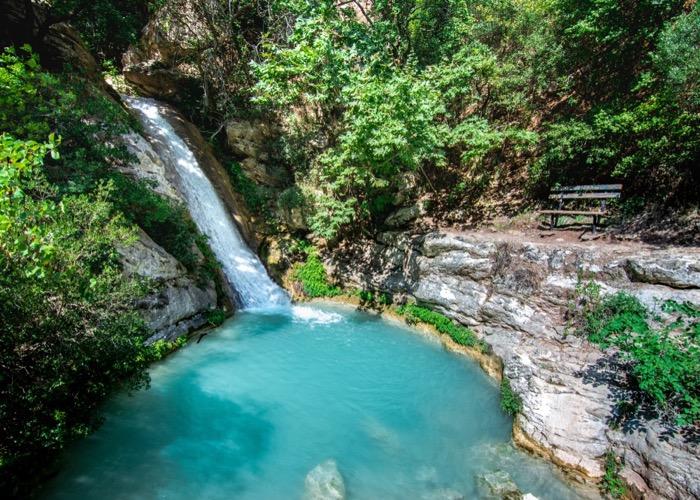
Some 40min away from the temple of Apollo, there are the Neda waterfalls, a unique natural park of unmatched beauty. Accessible through paths crossing the densely forested gorge of Neda, they offer a great opportunity for trekking lovers.
As a reward, you will admire the majestic scenery and swim in the natural pools of the waterfalls of River Neda, named after one of the Nymphs that raised Zeus.
A task not for the fainthearted, prepare beforehand for a demanding physical activity and ask the locals for the starting points of the trails.
Visit Methoni castle

Methoni castle is located on St. Nicholas cape in southwest Greece. Originally built by crusaders, Methoni was an important trading point during the journey of pilgrims to the Holy Lands.
It is dated to the period of Venetian rule (13th-15th century), and the only connection to the mainland is through a heavily fortified arched bridge.
At the most southern point, an octagonal tower once used as a prison -known as Bourtzi- overwatches the sea passage contributing to the impregnability of the castle.
Wander around the medieval ruins, and after your walk, relax on the beautiful beach of Methoni right next to the monument.
Sail to Sapientza island
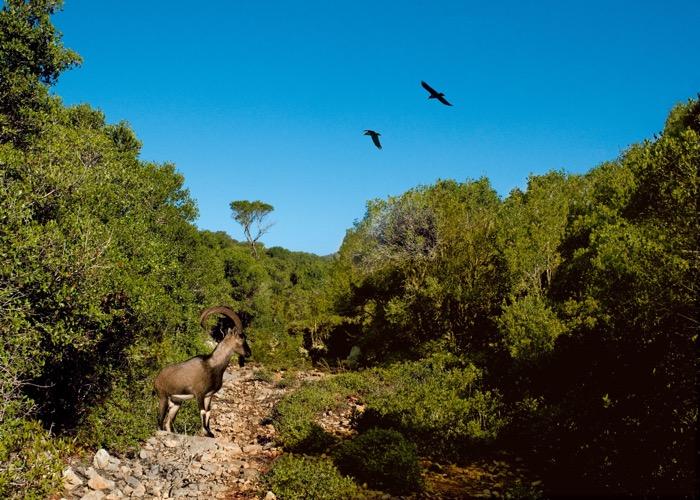
One of the two islands of Messenian Oinousses at the southern tip of the Peloponnese, Sapientza is a hidden paradise! With just two inhabitants, the island is a protected natural park full of dense forests and wildlife, such as the indigenous Cretan goat, known as kri-kri.
At the south shores of Sapientza is located the deepest point of the Mediterranean Sea, known as Calypso deep, with a maximum depth of 5.267m.
On the island, you can see a beautiful lighthouse built with the order of Queen Victoria of Britain to guard the sea passage close to a tiny heart-shaped island.
There is only one available beach on Sapientza, Ammos, in the northern part of the island, accessible by small boats sailing from the mainland.
Final Thoughts
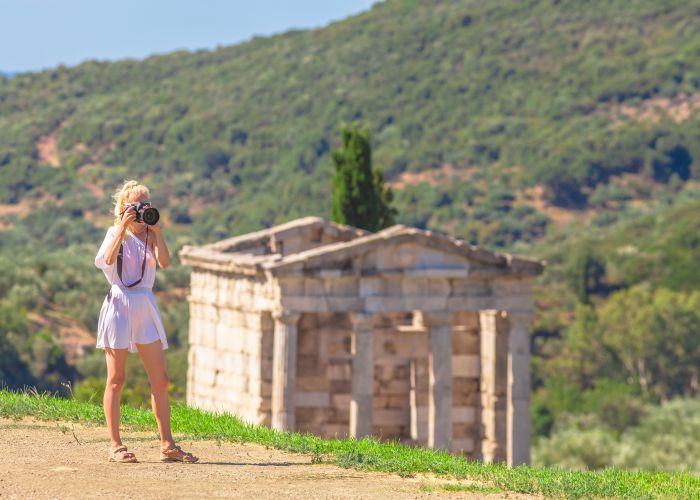
The ancient site of Messene - credits: Benny_Marty/Shutterstock.com
If you want to delve deeper into Greek history and culture, the team at Greeking.me has developed many carefully Greece vacation packages that aim to focus on all of the most fascinating and unique archeological sites that our country has to offer!
Although this beautiful country is saturated with archeological sites that are all mind-blowing in their own way, Messene may just be the most impressive of them all!
Frequently Asked Questions
What is Ancient Messene, and where is it located?
What is the history of Ancient Messene?
What are the must-visit attractions at Ancient Messene?
How can I get to Ancient Messene from nearby cities or towns?
What are the visiting hours and entrance fees for Ancient Messene?
